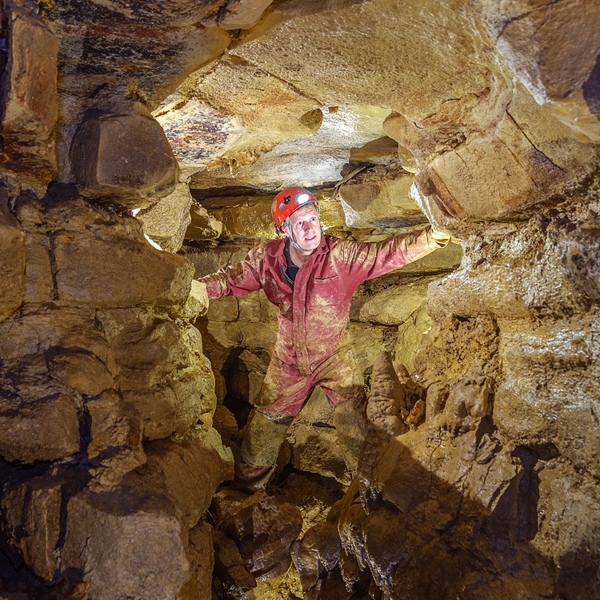The Cave Kingpin Buying Up America’s Underground
John Ackerman has spent millions procuring a majority of the known caves in Minnesota, which add up to dozens of miles of underground passageways and likely make him the largest cave owner in the U.S. He collects and charts them in the name of preservation, but his controversial methods have created many opponents.
New perk: Easily find new routes and hidden gems, upcoming running events, and more near you. Your weekly Local Running Newsletter has everything you need to lace up! .
The cave’s entrance was a rusting, three-foot-tall, red casing pipe rising out of the ground behind a Minnesota farmhouse, surrounded by a quiet, flat stretch of prairie grass. Just 2.5 feet across, it was topped with a green, diamond-plated steel cover and might easily have been mistaken for a well or a piece of farm equipment rather than the mouth of a 120-foot shaft leading into some five miles of subterranean passageways. The cave’s owner, a furniture-restoration specialist named John Ackerman, pulled a hefty ring of keys from his pocket, unfastened the padlock, and swiveled open the lid, revealing a ladder bolted precariously to the wall of the opening, which disappeared into blackness only ten feet down. From the surface, I could hear the sound of distant, surging water.
Ackerman is 66, but except for the presence of a very subtle hearing aid, he looks 10 or 15 years younger, with intensely blue eyes and the handsome face of a local news anchor. His hands are massive and weathered, which made me slightly nervous each time we shook, and he speaks with a lack of affect that projects supreme confidence. He was, in short, someone with whom I felt perfectly comfortable descending 12 stories through a hole in the middle of a Minnesota field. Following his lead, I clambered over the rim of the shaft and started slowly climbing down into Tyson Spring Cave.
Ten minutes later, I landed on the bank of a subterranean river, its waters a chilly 48 degrees, corresponding precisely to the surrounding air. Ackerman began to guide me, midstream, through the central passage; the water was ankle-deep at first, then, a few steps later, it rose to our chests. Broad stretches of the cave’s walls, floor, and ceiling were marked by formations—flowstone, helictites, rimstone dams—that looked like the kind of Gothic ornamentation advertised by roadside commercial caves and from which visitors are normally required to keep their distance.
While much of the river was placid, certain sections were more turbulent, the water wending its way down sudden drops and around piles of limestone boulders. Glinting in the light of my headlamp, a small aggregation of foam—the product of nitrogen leaking into the cave system from nearby farms—was the only sign of human presence. When I asked Ackerman how many people he allows into the cavern each year, he held up an outspread hand. “Fewer than I can count here,” he said.
Some distance into the cave, Ackerman stooped over to pluck a small bone from a dark alcove and then placed it daintily on a ledge. He told me he planned to send it, as he does all the bones that frequently turn up in Tyson Spring Cave, to the , in Saint Paul. Occasionally, Ackerman’s finds prove significant: in 2008, a pair of prehistoric antlers he happened upon in the cave were determined to be the first evidence of the long-extinct stag moose in the state. The discovery of a in a nearby passage that same year shifted estimates of the creature’s range some 600 miles north. Around us, undoubtedly, were plenty of other paleontological curiosities, but Ackerman had yet to survey the entire cave—he didn’t even know how big it was, let alone what might be hidden within.
That day I saw only a fraction of what Ackerman had explored in Tyson Spring. He told me of other distant caverns, more spectacular than anything I’d seen—elaborate and dense arrays of formations, vaulted rooms as large as single-family homes. “If you could see the entirety of the cave,” Ackerman said, “you’d think, One person shouldn’t own this.”







